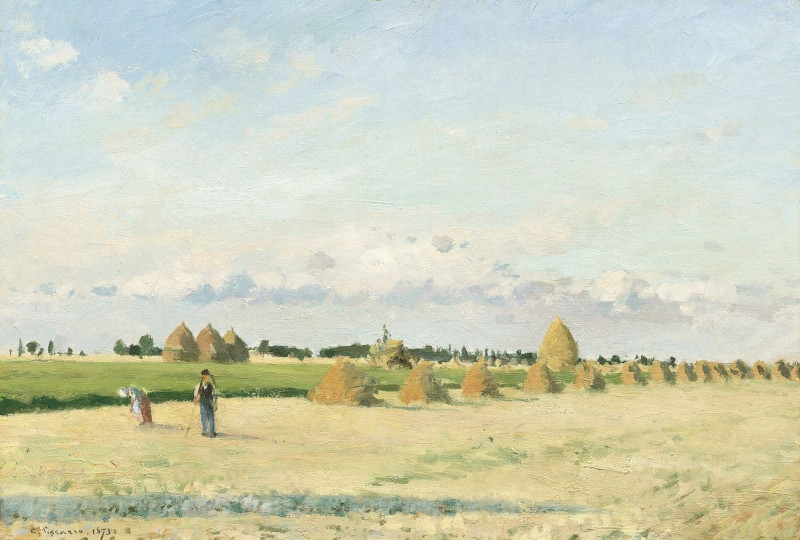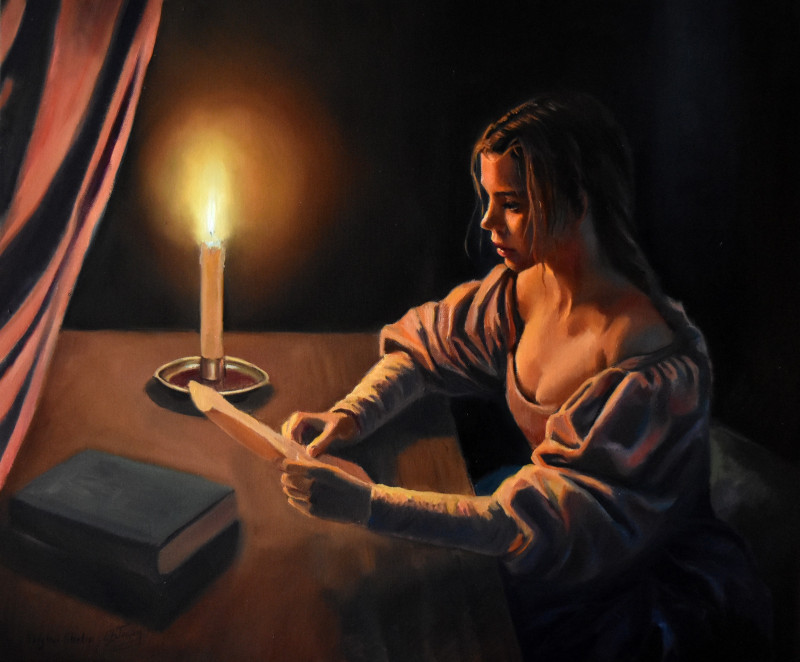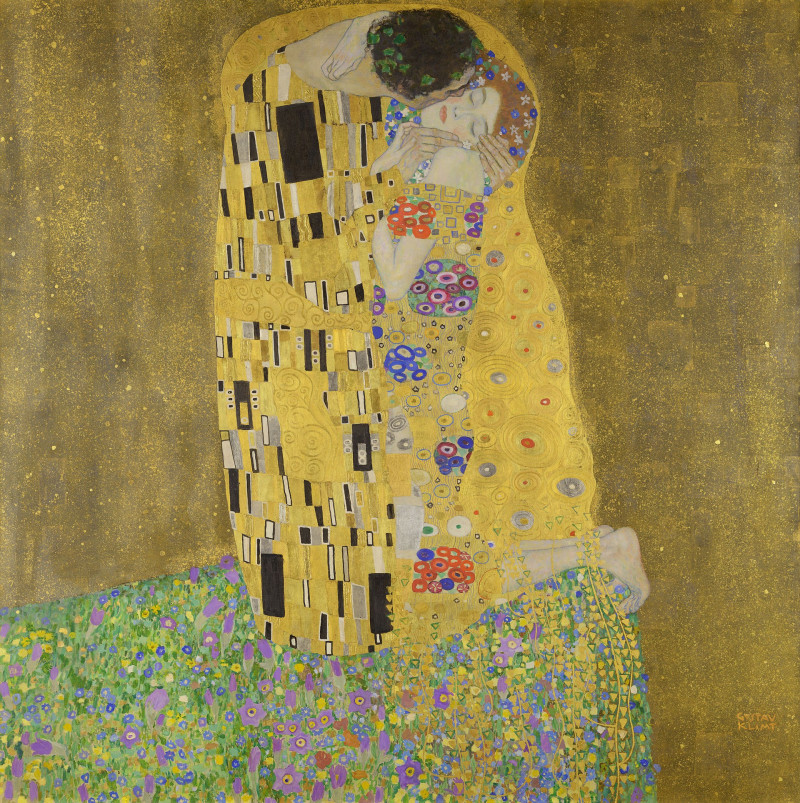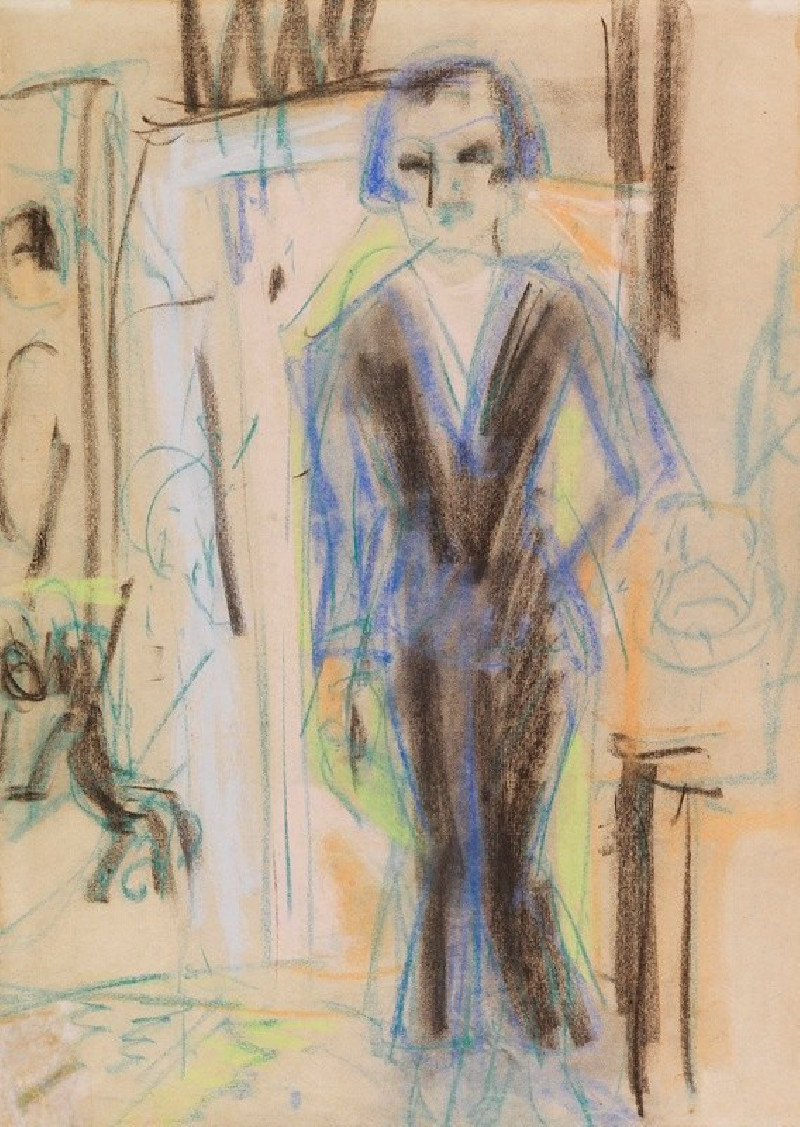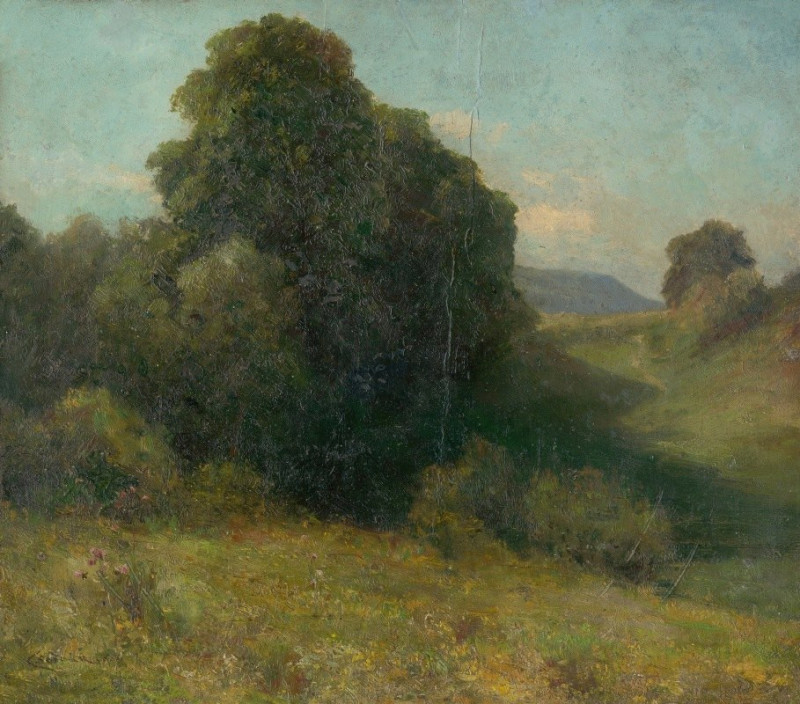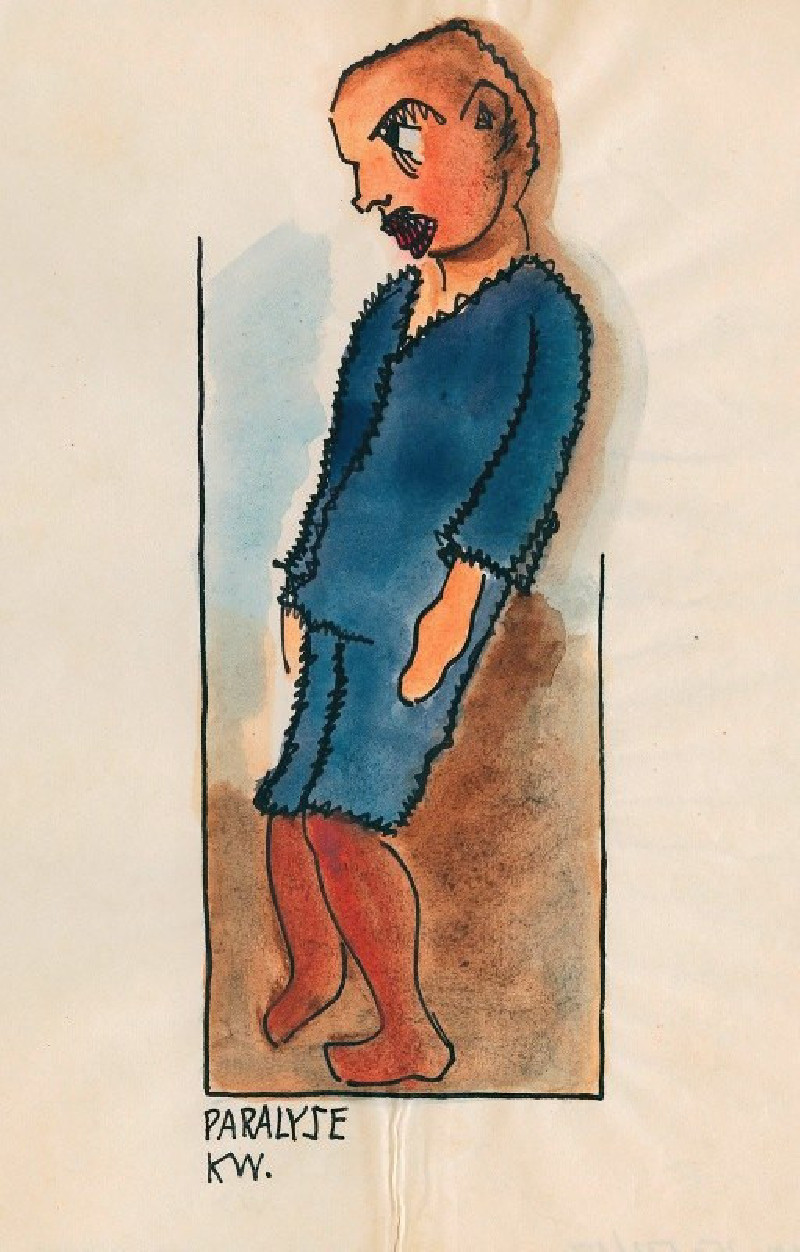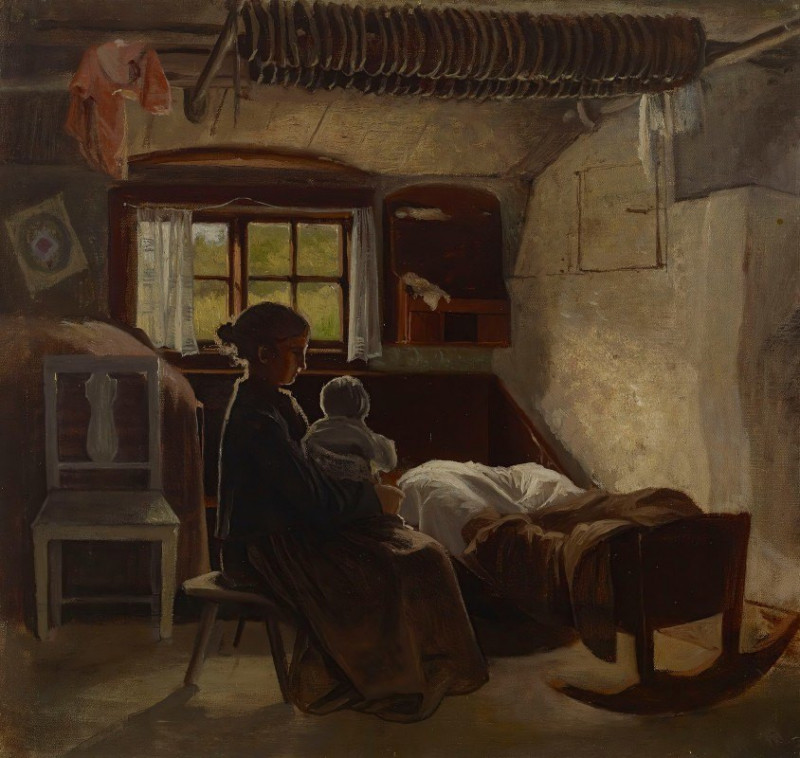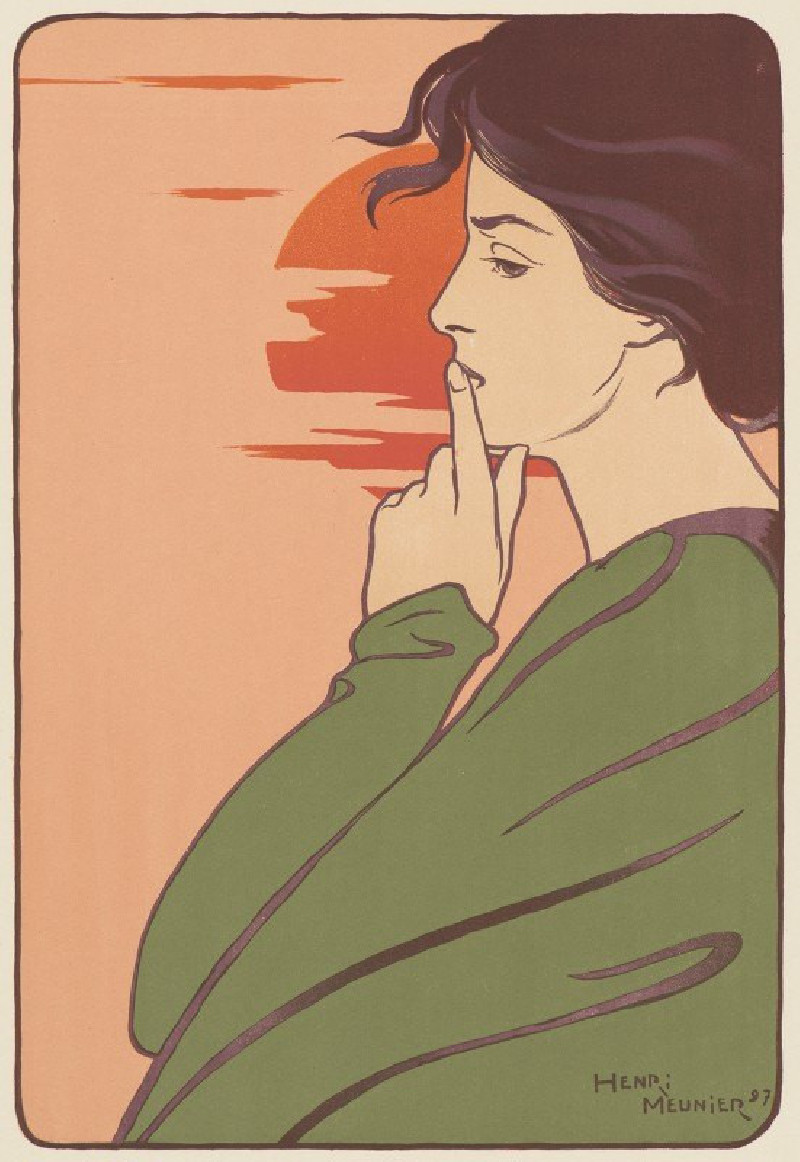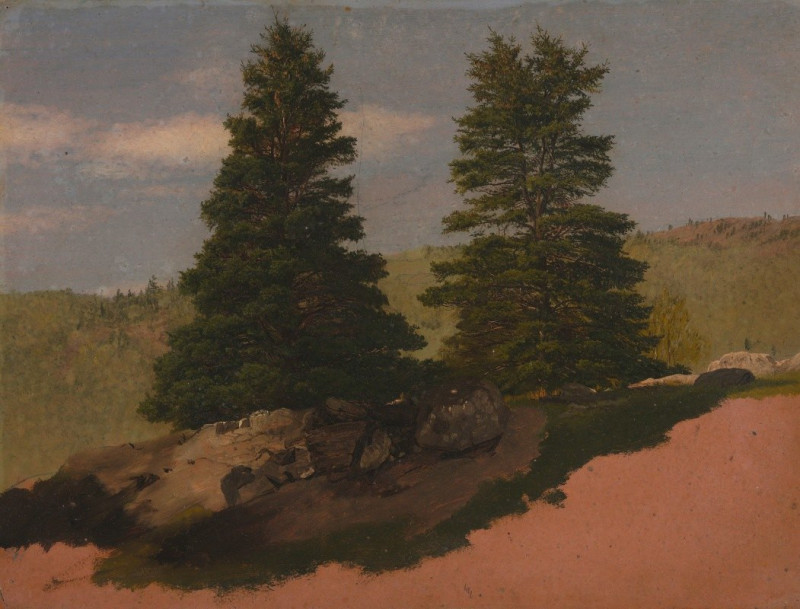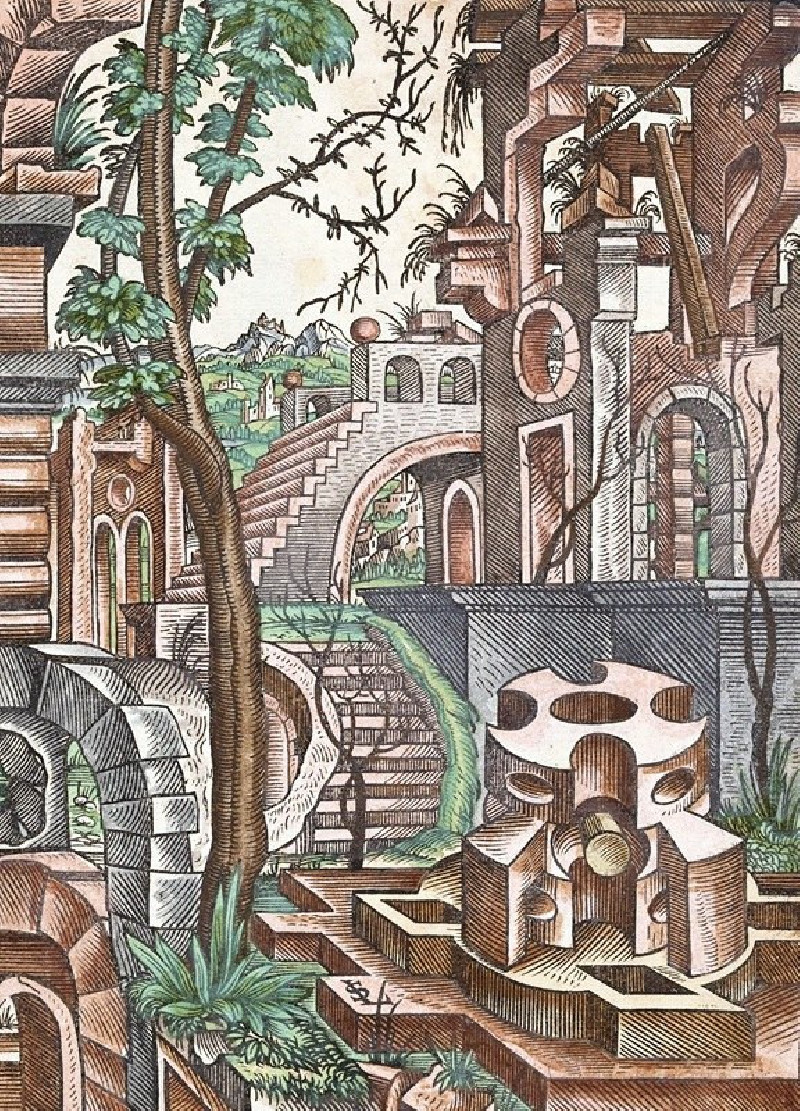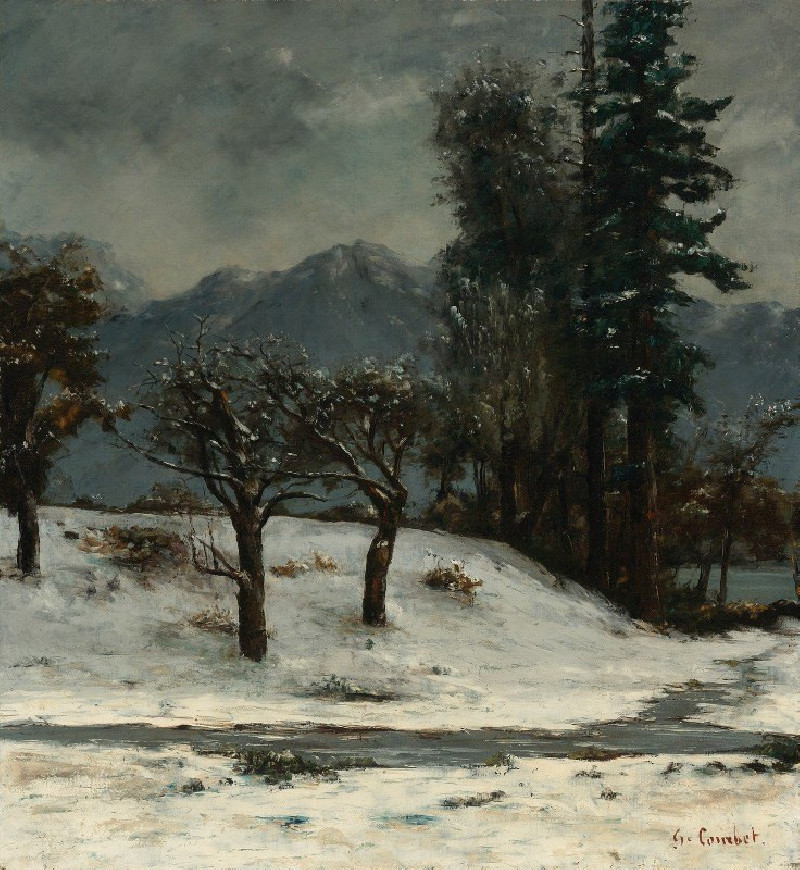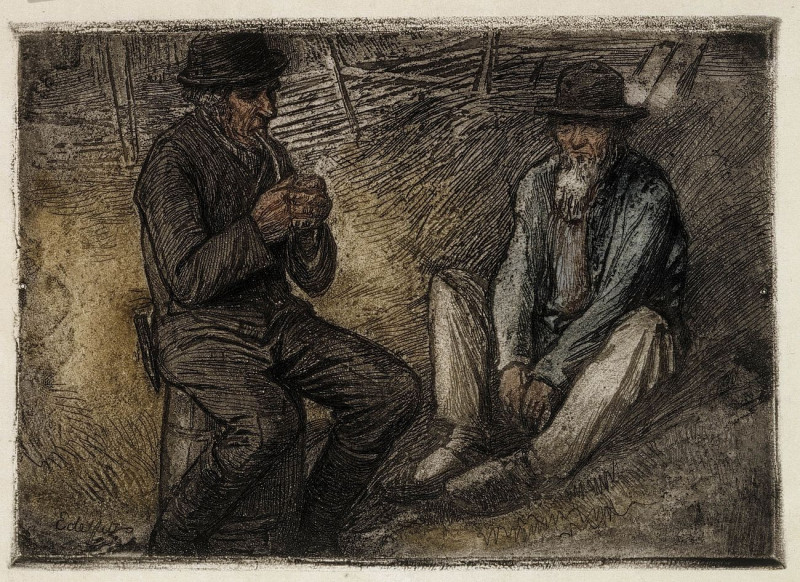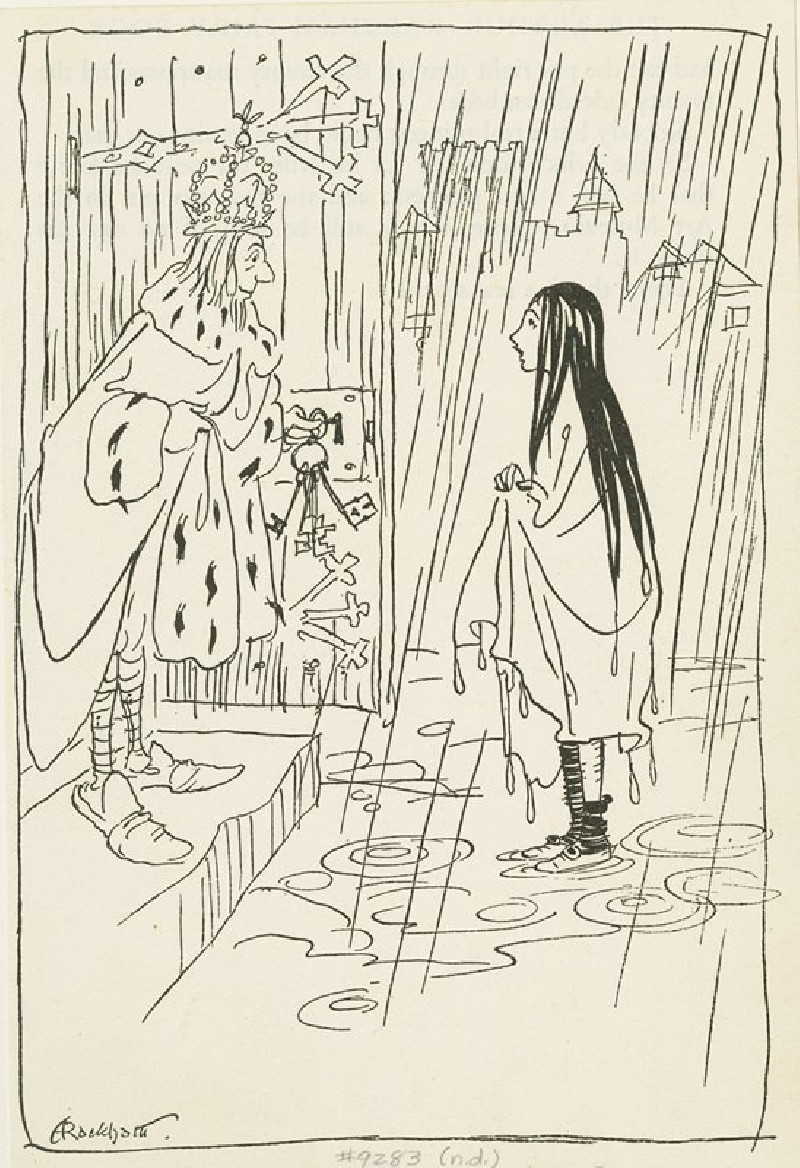Landscape, Ile-De-France
Technique: Giclée quality print
Recommended by our customers
More about this artwork
This painting by Camille Pissarro, titled "Landscape, Ile-De-France," captures a serene and expansive rural scene typical of the artist's work, focusing on the natural beauty and agricultural life of the French countryside. The composition is a beautiful showcase of Pissarro's impressionistic style, characterized by loose brushwork and a vivid portrayal of natural light.In the foreground, there are two figures, likely farmers, who are engaged in some form of agricultural activity. Their presence adds a human element to the scene, connecting the viewer with the daily life of rural inhabitants. The landscape is marked by wide-open fields that recede into the distance, under a wide, subtly clouded sky which takes up a significant portion of the painting, suggesting the vastness and openness of this rural setting.Large haystacks, or perhaps stacks of grain, dominate the middle ground. They are rounded and have a golden hue, possibly indicating harvest time. These haystacks are distributed across the fields and add a rhythmic visual element to the painting.The background is dotted with trees and possibly distant buildings or farms, which help to create depth and give a sense of scale. The horizon is fairly flat, with just a gentle rise, which is typical of the gentle, rolling landscape often found in Ile-De-France.Pissarro's use of color is subtle yet effective, with a palette that includes earth tones mixed with the greens of vegetation and the blues of the expansive sky.
Delivery
Returns
Blessed are they who see beautiful things in humble places where other people see nothing. — Camille Pissarro
Camille Pissarro (1830-1903) was born on St.Thomas (now the US Virgin Islands) to a Portuguese father and a Dominican mother. He went to Paris to study art at Ecole des Beaux-Arts. He was an early pioneer of pointillism and neo-impressionism and later became a mentor of many famous impressionist painters including Cezanne, Manet, Renoir, and Gauguin. His paintings depicted rural and urban French landscapes and lifestyle. Many of his works politically captured images of peasants and laborers. Today, he is considered the father of impressionism.

